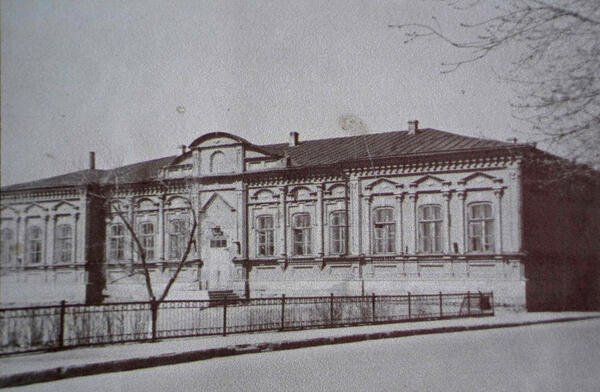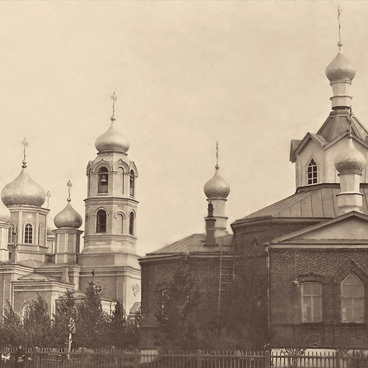This red brick building, which is still standing and is in good condition, was constructed in 1885. It is now more than 130 years old.
The ceremony for the laying of the foundation stone was a major event. After a solemn prayer, the first brick was laid by the town’s mayor, Dorimedont Gordeyevich Shvetsov (who later became first a sponsor and then a governor of the school). This single-storey brick building was originally intended as the town’s higher men’s college, and had four year-groups. It is an example of a functional public building in the late XIX Century Eclectic style.
In 1888 the school had just 5 teachers for its four year-groups, but by 1891 this had increased to 7, plus a school doctor. The teachers changed frequently (particularly the art teachers).
In 1898 a Sunday school for boys and men who had not been to regular school was added, and it continued in operation until 1909.
The ceremony for the laying of the foundation stone was a major event. After a solemn prayer, the first brick was laid by the town’s mayor, Dorimedont Gordeyevich Shvetsov (who later became first a sponsor and then a governor of the school). This single-storey brick building was originally intended as the town’s higher men’s college, and had four year-groups. It is an example of a functional public building in the late XIX Century Eclectic style.
In 1888 the school had just 5 teachers for its four year-groups, but by 1891 this had increased to 7, plus a school doctor. The teachers changed frequently (particularly the art teachers).
In 1898 a Sunday school for boys and men who had not been to regular school was added, and it continued in operation until 1909.



